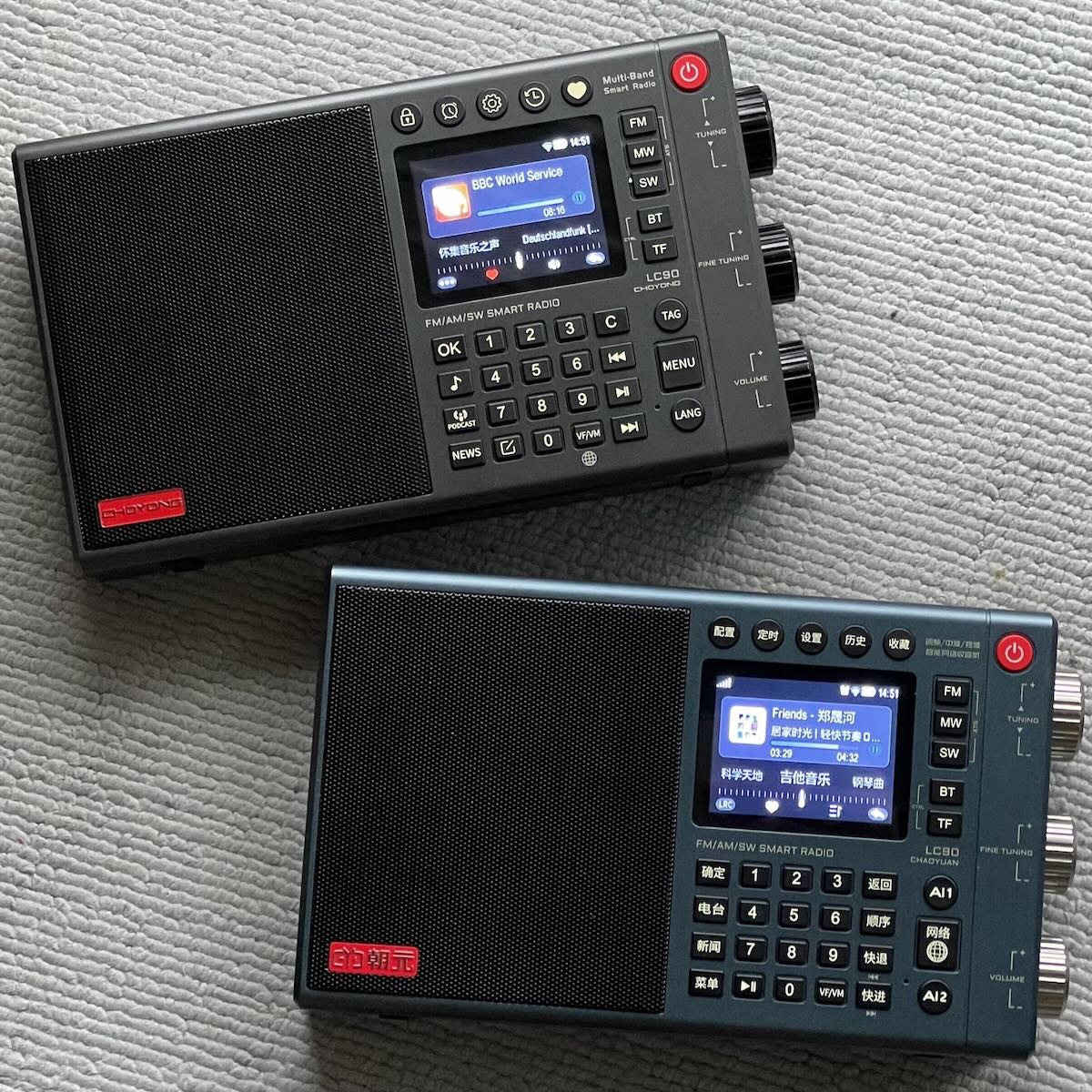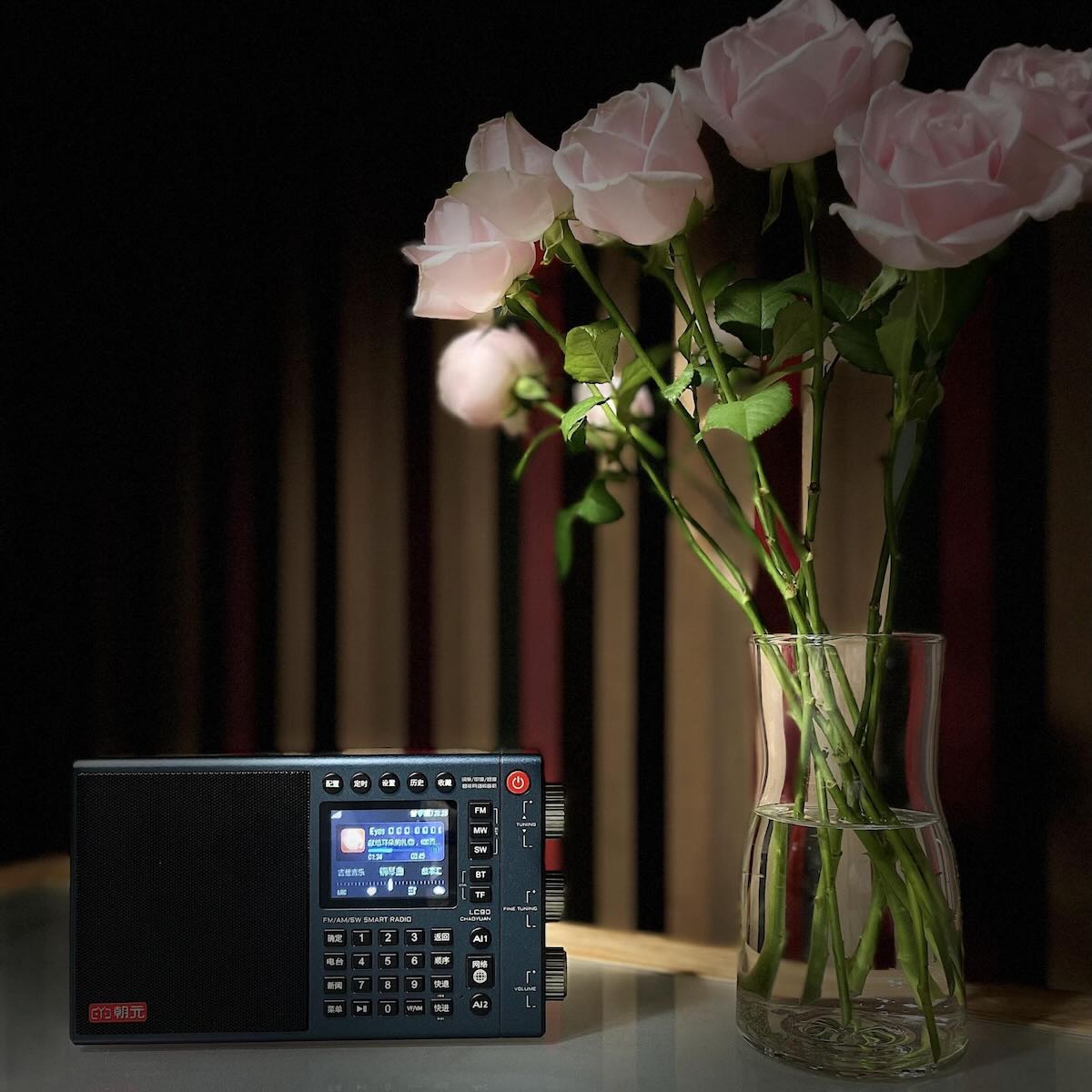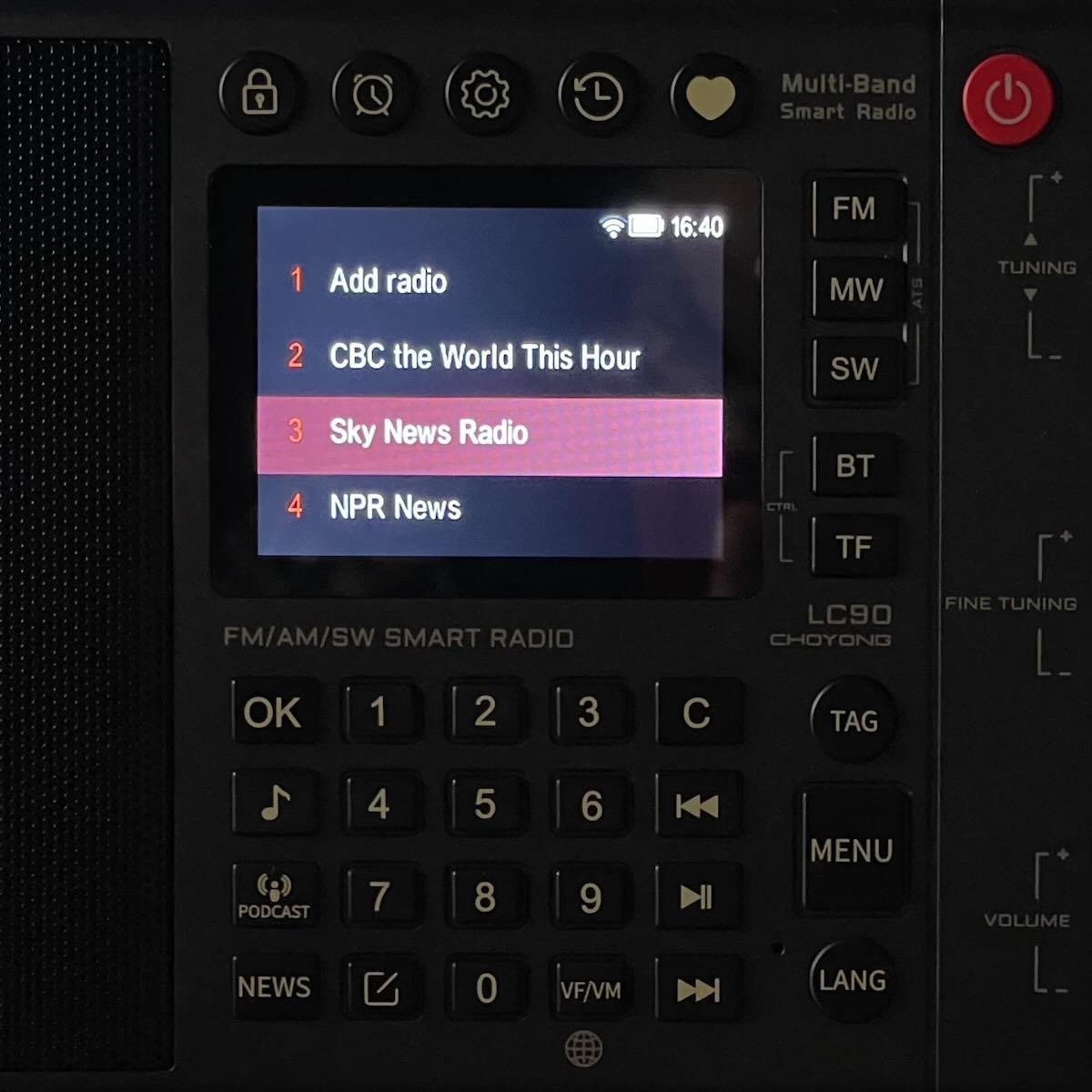Many thanks to SWLing Post contributor, Michael Ye (BD4AAQ), for the following guest post:
 Twins, Yet Each One Unique – A Comparison of the Worldwide Version of LC90 with its Chinese Counterpart
Twins, Yet Each One Unique – A Comparison of the Worldwide Version of LC90 with its Chinese Counterpart
by Michael Ye (BD4AAQ)
The export version of the LC90 is now available in the market [affiliate link]. Previously, we examined the Chinese version, which has been in the China market since early 2023. Instead of a review of the export version, this article will focus on the similarities and differences between the two LC90 versions – the version that has just started to be distributed outside China and the version that is already being sold in China. A link to my previous article can be found by clicking here.
One thing to note is the name of the manufacturer. In my previous review, I used Chaoyuan, the “pinyin” phonetic of the Chinese characters of the name of the company. As it turned out, the westernised spelling that the company uses is Choyong, or Choyong Electronics.
The LC90, a hybrid radio that combines the Internet radio with the traditional radio, is a bold move and seems to be well-received by shortwave listeners and beyond. Let’s explore what these two versions of the same model have to offer.
Appearance
The two versions of the radio look the same in appearance. However, upon closer inspection, you will notice the language on the buttons differs. The export version has all the buttons labeled in English, while the buttons of the Chinese version have a mixture of Chinese and English.
Traditional Radio
I do not find differences between the FM, MW and SW features of the two versions. Both versions have the specifications as follows: FM: 64-108 MHz, MW: 522-1710 kHz and SW: 2.3-26.10 MHz. Shortwave performance remains excellent. However, for the export version, you could toggle the MW tuning step between 9 kHz and 10 kHz, and the FM tuning step as well, through the setup (gearbox) button, but it does not seem possible to change any tuning step on the Chinese version – this seems to be a matter of software upgrade and so is not really an issue.
On both versions, press MW again to enter LW (153-279 kHz).
Internet Radio
In terms of the stations that can be heard, the Internet radio exhibits significant differences from that of the Chinese version. The Chinese version is designed to exclusively feature Chinese language stations (and a few English language stations) in China. If we were to liken the Chinese Internet radio to a closed system such as iOS, it would be stable, reliable but restrictive. In contrast, the export version could be compared to Android, offering more open, inclusive and customisable user experience.
On the export version, the MENU button provides access to the main menu, which begins with the six continents (excluding Antarctica) and allows users to navigate to the desired country and then select a specific station. Additionally, shortcut keys are available for direct access to MUSIC, PODCAST, NEWS, TAG and LANG (languages).
TAG and LANG for Ai1 and Ai2 Buttons
 On the Chinese version, two buttons, Ai1 and Ai2, serve as voice assistants. Activate and speak to them and the radio directly plays the content (Ai1) or displays search results for users to choose from (Ai2). They come in handy when you look for a specific item, for instance the title of a song or a talk show. On the export version, however, the voice assistants have been removed and replaced with shortcuts TAG and LANG.
On the Chinese version, two buttons, Ai1 and Ai2, serve as voice assistants. Activate and speak to them and the radio directly plays the content (Ai1) or displays search results for users to choose from (Ai2). They come in handy when you look for a specific item, for instance the title of a song or a talk show. On the export version, however, the voice assistants have been removed and replaced with shortcuts TAG and LANG.
Add Your Own Stations
The Chinese version has about 1000 Chinese Internet stations built-in. On the worldwide version of the radio, there is a vast number of Internet stations available, literally tens of thousands of them, in different languages, and from different corners of the world. The number is updated from time to time. And that is not all. A really cool feature is the ability to add stations of your choice and it is easy to do with the help of a mobile phone. Unfortunately, this feature for adding your own stations is not available in the Chinese version.

Nano SIM card
The Chinese version comes with a built-in nano SIM card that is prepaid and provides Internet data. To continue using it, simply add credit to the card. In contrast, the export version does not include a prepaid, data-enabled SIM card for the user. Still, the user can use a WI-FI connection or purchase a 4G nano SIM card to insert into the device’s slot.
Some Features Not Discussed Previously
Both versions have the following features:
- Keyboard backlight;
- IPS LCD with backlight;
- Type-C charging cable supplied;
- TF card supported (to store and play your own music); and
- Bluetooth for the radio to serve as a Bluetooth speaker.
The integration of high-tech gadgets and advanced devices into our daily routines has become indispensable in this age of the Internet. It is essential to adapt to the ever-evolving nature of the times.
Bottom Line
The Choyong LC90 is an exceptional radio that combines traditional radio features with modern Internet capabilities. It is available in both domestic and worldwide versions. The revolutionary design of the LC90 allows for excellent overall performance in both over-the-air radio reception and online streaming/podcasting.
There is no difference in traditional radio reception and performance between the domestic and worldwide versions of the LC90. However, the Internet features are drastically different, as the worldwide version serves audiences around the world, while the Chinese version is dedicated to the audience in China.
Overall, the Choyong LC90 offers a unique combination of traditional radio and modern Internet capabilities, making it a versatile and high-performing device for radio enthusiasts and music lovers.
Wish List
Is SSB decoding necessary? Well, it depends. The radio primarily caters to broadcast listeners, but both hardcore amateur radio hobbyists and general listeners may find it appealing. While adding SSB decoding can enhance its functionality, it will increase costs and may require additional space, considering it already combines two radios in one device.
There are two switches, the red button (upper right) and the volume/sleep knob (lower right side). Is it really necessary to have both?
On the export version, the “network error” message may occasionally pop up, and the radio would become quiet until human intervention steps in. Is it feasible for the radio to automatically resume play after the network error is cleared?
For some users, the antenna jack is a bit too close to the tuning knob. In most situations, this proximity does not impact the radio’s operation. However, if you need to connect an antenna using a connector, you may encounter difficulty or even find it impossible to plug it in.
Click here to check out the Choyong LC90 (export version) on Amazon.com.
Note that this Amazon link supports the SWLing Post at no cost to you. Thank you!

Is there a way to change the display from Chinese language into English in the Chinese version of LC90?
Did the English version come with a brown cover? In the Chinese version I know it came. Does it fit the radio or is it smaller than the radio?
What is the LC90M version?
Hi Michael,
Thanks for your review of both models, I have read all of them. The question I have for you is this. What are the supported audio files format for the TF card (MicroSd) for media player. Nobody seems to mention that and I can’t find the PDF manual anywhere. I am interested, but going to wait for better firmware and price.
Thanks,
Hi Edjah: I would assume it supports common audio files. I have a Tecsun PL990. Its documentation says “FLAC/WAV/APE/WMA and MP3”. I assume the LC90 does the same. So I asked a Choyong staff, who said it supports “32 – 256G TF card if in FAT32” and supports all audio formats including WMA, FLAC and APE. Hope this helps. Michael
So, from comments posted on the FB page, there appears to be a problem with the firmware, at least on the Chinese model. Not sure abcout the international/export version. We shall see what develops. Radiooddity does have a return policy.
I think if the BT was not just just speaker but selectable as transmitter it would makes more sense.
To transmit to headphone or hearing aid.
The color of the Chinese is much nicer
70 years in portable radio design and that one has improper antenna jack and went to production…
m2c.
I totally agree about the Bluetooth. ALL new radios should have a Bluetooth transmitter so that cordless headphones can be used.
I recently picked up a ATS-120 radio that does have a BT transmitter and is a joy to use with my headphones.
As to the antenna jack placement – This is really weird. It has all connectors on the same side as the knob controls. While the other side of the radio is totally blank. It would have been a lot better to have the antenna, charging and headphone jack on the left side of the radio, That way no wires would be coming out between the operating controls.
73
Bill WD9EQD
Smithville, NJ
I tested again and can confirm that BT cannot be selected to connect to a headphone. Choyong has put in a lot of effort into producing good sound quality, which is probably why they dedicated all the space on the left to include “one bass driver, one bass radiator, and one silk dome tweeter”. The audio quality is indeed great.
It would be even better to also make it possible to connect a BT headphone. Let’s wait and see.
What portal services internet radio option? is it possible to view anywhere the stations that can be played on this radio? Is it skytune? MediaU? Thank you!
Choyong seems to have its own cloud servers instead of using services such as Frontier. I understand stations added oneself do not go through their servers. I like this feature which is not available on the Chinese version. You add stations that are your favourites and that are reliable.
no SSB? without single sideband it is a deal breaker to me, SSB is my favorite listening mode
The last time I spoke to a seller they said they won’t get none in on the shelves around March, it’ s like the insiders got the test receivers while us average consumers have to way around March, mid April to be able to buy one, and still they are super expensive like $250 or more, and I think Apple with their fancy i devices need to just make a iRadio out of this one since it’s attracting many Apple users who are mostly into online radio and some offline short wave radio. I don’t see myself spending that much on a receiver that I cannot afford due to the dramatic increase of rent going on under the Section 8 program. Everything is so darn high these days, you have to be a rich person to own a nice piece of equipment these days. It’s the sad truth. I will see in the mid or late year when ever the price comes down and see if I can get one soon, and hopefully the bugs and kinks have been worked out, because last time a reviewer on You Tube was trying to demonstrate the MW (AM Broadcast) band, he can barely receive any local AM or distant AM stations on this new receiver which means it sounds like the ferrite rod and AM (MW) antenna circuit and RF preamp needs serious work, and also if the MW (AM) band is poor, then the LW band will be very poor due to LW being such a low frequency band that needs more circuitry and a possible longer up to 4.5 inch ferrite rod and litz wire up to 2.5 to 4.7 mH or higher for the best possible inductance which means there needs to be a way to get a MW and LW antenna made correctly for the price we are paying for this advanced radio receiver.
Pretty much missing most of LW if it stops at 279khz?
How is the reception on MW/ FM..? As for the international internet version, does this mean that you can go to Wi-Fi hotspot and use it for “free”..? Sounds good either, way. But it’s too bad the radio manufactures are omitting the LW/Air Band. In highschool, I owned the Radio Shack “ PatrolMan”, which had Marine Band, and CW….so these should be included in today’s radios…?
Please refer to my previous review: https://swling.com/blog/2023/08/guest-post-a-review-of-the-chaoyuan-lc90-hybrid-shortwave-4g-internet-radio/
In short, SW excellent, FM fair, and MW not good. But MW improves significantly with external antenna.
Thanks for the review, will be keeping an eye on this one as I have been considering an Internet radio.
I’m on my 3rd unit from Amazon. The first 2 quit working after less than 30 days. Wifi reception on all 3 is dismal.
Buyer beware
Sorry to hear that. In my case, there’s no problem with Wi-Fi, but I have “network error” messages regarding individual stations (maybe not online or not loading?). Other stations still work and no disconnection of Wi-Fi.
desculpe a pergunta… porque continua comprando se não presta???
It’s US$249 on Amazon.
Obviously they’ve worked hard on customizing the export version. Suggest any potential buyer to read the reviews on Amazon; they’re a bit mixed right now, especially as regards the Wifi stability and consistency of UI.
Which doesn’t improve upon restart or reset. In fact, it gets worse. This usually means a corrupt volatile memory, most likely due to poor manufacturing. (And it doesn’t help that firmware can only be updated with a SIM card, and not over WiFi nor, apparently, a microSD card.)
Mine just became an expensive brick. Gonna get a refund, after only a day.